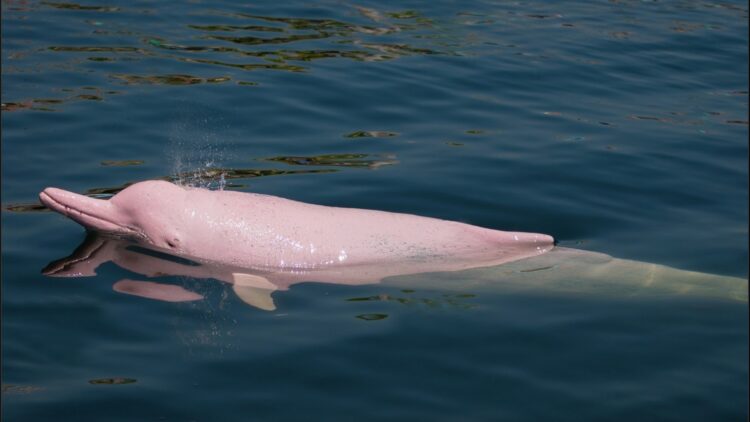We consider the Amazon to be the lungs of the world, but it is much more than that. Apart from containing the densest and most extensive forest on the entire planet, its river arteries give life to a unique ecosystem. Apart from its famous neon-colored frogs, it is home to a very peculiar animal, the pink dolphin. This freshwater cetacean is a mythical figure, referred to by local communities as a magical being necessary for the health of the river.
However, in 2023, the magic turned into a nightmare: an extreme drought hit the Amazon lakes, raising temperatures to levels that turned them into a lethal hot tub. The water temperature reached an unsustainable 41°C (105.8°F). No living creature survived the temperatures of these lakes. This ecological disaster took the lives of more than 209 dolphins, 10% of the local population in one fell swoop. To this day, the pink dolphin population is still recovering from this tragedy.
Disaster on Lake Tefé
Lake Tefé, located in the state of Amazonas, Brazil, was the scene of the worst drought the region had experienced in decades. It was caused by a lethal combination of global climate change and a strong El Niño phenomenon this year. The lack of rain caused the water level to drop dramatically, by 75%. This shallow depth, combined with extreme solar radiation, was the key to the catastrophe. After 11 days without cloud cover, the water temperature rose mercilessly in the sun. There was not even a breeze to help dissipate the heat.
The result was a thermal broth, well above the tolerance of even the most resistant aquatic mammals. The consequences were horrific, while the local population looked on helplessly: more than 200 dolphins (mainly pink dolphins or Inia geoffrensis, and tucuxis or Sotalia fluviatilis) died in less than two months, not to mention the thousands of times they affected the entire ecosystem and the human communities that depend heavily on them for fishing and subsistence. Hydrologist Ayan Fleischmann, from the Mamirauá Institute, confirmed that thermal stress was the main cause of this ecological cataclysm. The mass death of a large part of this ecosystem was an international wake-up call about the fragility of the Amazon. Even the most remote corner of the earth, far from the touch of industrialized man, is susceptible to natural climate disasters.
The Pink Dolphin
This cute animal with its beautiful pink color is known as the “jaguar of the water.” Despite its beautiful appearance, it is considered the top predator in the ecosystem’s food chain. The Inia geoffrensis (according to its scientific name) is actually dark gray in color. It turns pink as it ages, becomes more active, and begins its diet. One unique thing about this species of dolphin is that it adapts to life in floodwaters.
Unlike its marine cousins, its cervical vertebrae are not fused, allowing it to turn its head up to 90°. They can easily maneuver between the tree trunks of flooded forests and narrow river channels. Thanks to their large pectoral fins, they also have exceptional maneuverability that their oceanic cousins do not have. Although they are slow swimmers, they are very resilient and well adapted to their environment.
The Amazon pink river dolphin is a carnivore with a very broad diet: it eats more than 50 species of fish… including piranhas. They are also capable of consuming prey that is difficult to catch, such as river turtles and crabs, which they crush with their special molar-like teeth.
They are considered a very intelligent species. They are curious and playful, and often like to interact with canoes and fishermen on the river. Fortunately, they have been found to be more difficult to train in captivity than marine dolphins, so there is no exotic animal market that wants to trade in them. The Amazon river dolphin lives best in freedom in its wild environment, right in the heart of the Amazon.

